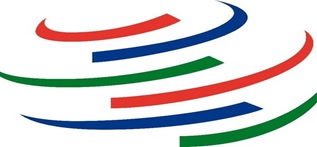22 September, 2025
World Trade Report 2025: World Trade Organization (WTO)
Sat 20 Sep, 2025
Reference:
- The World Trade Organization (WTO) has released its World Trade Report 2025.
Key Findings:
1. Trade Growth Forecast:
- With appropriate policies such as digital infrastructure and skill development, AI could increase cross-border flows of goods and services by 34–37% by 2040.
- Under various scenarios, global trade value could rise by up to 40%.
2. Productivity and Cost Reduction:
- AI is expected to reduce trade costs and increase productivity, especially in medium- and low-income countries if the technological gap is bridged.
3. Inclusive Access:
- AI makes trade more accessible, for instance by providing developing countries with AI-enabled inputs (raw materials, semiconductors).
- In 2023, the global trade of such AI-enabled goods was USD 2.3 trillion.
4. Inequalities:
- High-income countries have greater access to AI, while low-income countries face a digital divide.
- Labor markets may be affected by AI, but trade can help balance these effects.
5. Impact on Global GDP:
- AI is expected to boost global GDP, but policy failures may result in unequal growth.
Trade Volume and Forecasts:
| Indicator | 2024 (Actual) | 2025 (Forecast) | 2026 (Forecast) | Note |
| Goods trade volume | +2.9% | +0.9% | +1.8% | Impacted by tariff increases; improvement over April estimate (-0.2%). |
| Commercial services trade | +9% (in value) | New forecast | New forecast | Services forecast provided for the first time. |
| Global export value (goods) | USD 24.43 trillion | - | - | 2% growth in 2024, but falling prices. |
| North America exports | - | -12.6% | - | Most affected by tariffs. |
| AI-enabled trade growth (by 2040) | - | - | +34–40% | Depends on policy reforms. |
Additional Insights:
- Goods trade in 2025 is expected to grow 0.9%, better than April’s -0.2%, but below the baseline of 2.7%.
- Risk scenario: Reciprocal tariffs could reduce trade by 1.5% in 2025, impacting LDCs more.
- Regional breakdown: Decline in North America, limited positive contributions from energy-exporting economies.
Challenges:
- Policy Uncertainty: Tariff wars (e.g., USA-China) may shrink trade; instability could reduce global trade by up to 3% in 2025.
- Digital Divide: Low-income countries may not fully benefit from AI due to lack of digital infrastructure and skills.
- Labor Market Impact: AI may reduce jobs, especially in developing countries.
- Regulatory Gaps: Lack of transparency in AI-related trade measures (SPS, TBT).
- Global Risks: Protectionism, geopolitical tensions, and falling oil prices could slow growth in 2026.
Recommendations:
- Inclusive Policies: Invest in digital infrastructure, skill training, and technology transfer to ensure low-income countries are not left behind.
- Strengthen WTO Role: Enhance dialogue on AI, use tools like ePing, and develop digital trade rules.
- Trade Facilitation: Ease trade of AI-enabled goods, reduce tariffs on raw materials and semiconductors.
- Risk Management: Prioritize multilateral negotiations to reduce policy uncertainty.
- Capacity Building: Increase support for developing countries to make AI-led trade development inclusive.
India’s Global Trade Position:
- Merchandise exports: Rank 14th, share 2.2%
- Merchandise imports: Rank 7th, share 3.4%
- Commercial services exports: Rank 6th, share 5.3%
- Commercial services imports: Rank unchanged, share 4.1%
World Trade Organization (WTO) Overview:
- Established: 1 January 1995
- Headquarters: Geneva, Switzerland
- Objective: Establish and enforce rules to ensure global trade is free, transparent, and smooth.
- Members: 164
Key Functions:
- Monitor and implement trade agreements.
- Resolve trade disputes between member countries.
- Coordinate global trade policies and rules.
- Support trade empowerment of developing countries.
Main Bodies:
- Ministerial Conference: Highest decision-making body
- General Council: Executive and policy-making body
- Dispute Settlement Body (DSB)
- Trade and Development Council


















